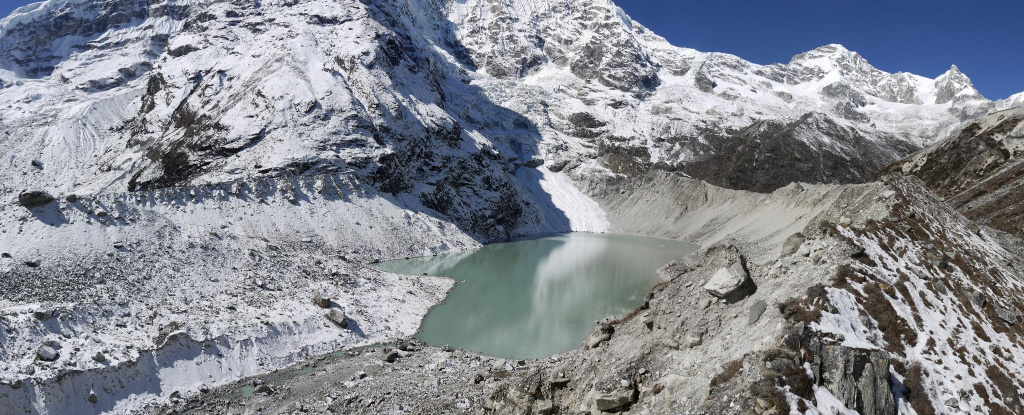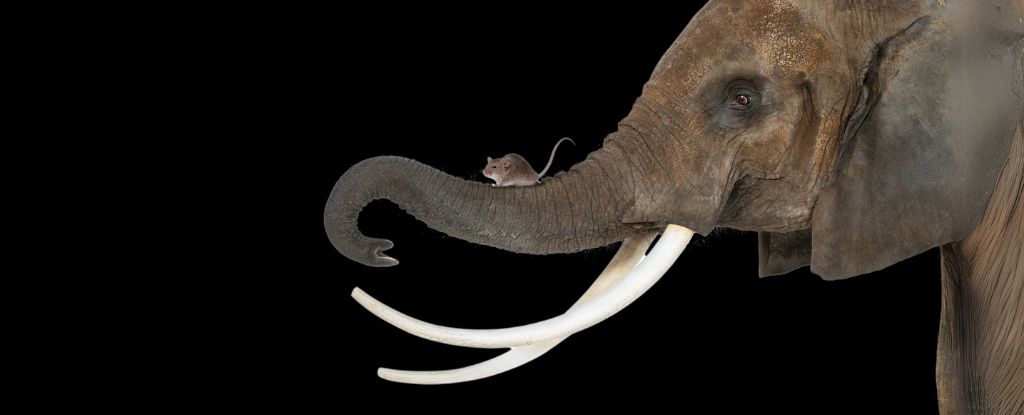Glaciers are melting, putting flash floods at risk for millions of people around the world, new study finds.
Most of these people live in just four countries – India, Pakistan, Peru and China – where glacial lakes are numerous and populations vulnerable to climate catastrophe.
glaciers are’rivers of ice‘ formed from compressed snow over millions of years. They slowly seep into the valleys and sometimes grow so large that they form ice sheets that stretch out to sea.
But as temperatures rise, glaciers become melts faster as scientists thought and around half of the world’s 215,000 glaciers could disappear until the end of the century.
The effects were felt much, much earlier. Just as warm seawater can rise from the depths Melting ice sheets from belowMeltwater that collects under glaciers on land can accelerate ice loss.
Where this runoff accumulates in depressions created by retreating ice, deep lakes and fast-flowing rivers can form, rising and falling at the whim of continued ice loss.
This new study, led by natural hazards researcher Caroline Taylor of Newcastle University in the UK, estimates around 15 million people live downstream of a glacial lake that could burst.
However, without detailed on-site studies, it is very difficult to predict when a glacial lake will actually overflow.
Glacial Lake Outburst Floods (GLOF) also often occur without warning, sweeping through townships killing hundreds if not thousands of people and destroying any infrastructure in their path; a path of destruction that can stretch for 120 kilometers (74.5 miles).
Therefore, Taylor and colleagues assessed the risk that glacial lakes worldwide pose to people living among them to catalyze targeted risk management efforts to help those most at risk.
Researchers compiled information on the status of glacial lakes that have increased in size, number and volume over the past three decades, and on the communities living downstream.
The risk can be difficult to calculate, but in this case the researchers considered communities’ proximity to a potential eruption (their vulnerability) and the likelihood that they would be affected if the lake bursts (vulnerability) as of 2020. Political corruption has also been identified noted as it hampers recovery efforts.
According to the researchersThis is the first global study “to consider not only physical sea conditions, but also societal exposure and vulnerability that directly affect GLOF hazard.”
Analysis has shown that the areas of greatest danger are not those with the largest, most numerous, or fastest-growing glacial lakes, as you might expect. Rather, the number of people in the region and their ability to cope with disasters are central to their risk.
Populations in the high mountain regions of Asia are most exposed and live closest to glacial lakes. Pakistan and China are considered the two most vulnerable countries in the world.
In Pakistan, 2.1 million people live in close proximity to glacial lakes at risk of overflowing – almost twice as many as in China. However, China’s glacial lakes are larger and more numerous, so could do more damage to infrastructure.
Recently, the Himalayas have become a “hotspot” for research on the possible effects of swelling glacial lakes. But the researchers also named the Andes of South America, and particularly Peru, which ranks third in terms of dangers, as another area of concern.
Few research studies have been conducted in the Andes, and yet the number of glacial lakes across the region has increased by 93 percent over the past two decades (compared to just 37 percent in Asia). Deep-rooted corruption is also an issue.
“This data scarcity in the Andes potentially prevents meaningful assessments of the true GLOF risk in the region and warrants urgent attention, especially given that this region is home to the second and third most dangerous basins,” Taylor and colleagues write.
Although the researchers were only looking at a snapshot, they said their methods could be used to monitor the risk of glacial lake flooding over time.
However, communities do not sit idle. In 2015, Peruvian farmer and mountain guide Saúl Luciano Lliuya sued Germany’s largest electricity supplier RWE for the costs of protecting his hometown of Huaraz from the potential flood of the glacial lake Palcacocha.
The The landmark case is progressingwith German judges travel to the region in 2022 to assess the extent of potential damage to Huaraz from a flood outbreak. The lake has swollen 34 times compared to 1970, and rockfalls could soon trigger an overflow.
Legal proof that pollution emitted in Europe melted a glacier in Peru is here not made easy. But scientifically a 2021 peer review study claims that greenhouse gas emissions have accelerated glacier melt and increased flood risk.
If Luciano Lliuya succeeds in his case, it would advance other cases attempting to hold fossil fuel companies accountable for their contributions to global climate change.
The research was published in nature communication.





